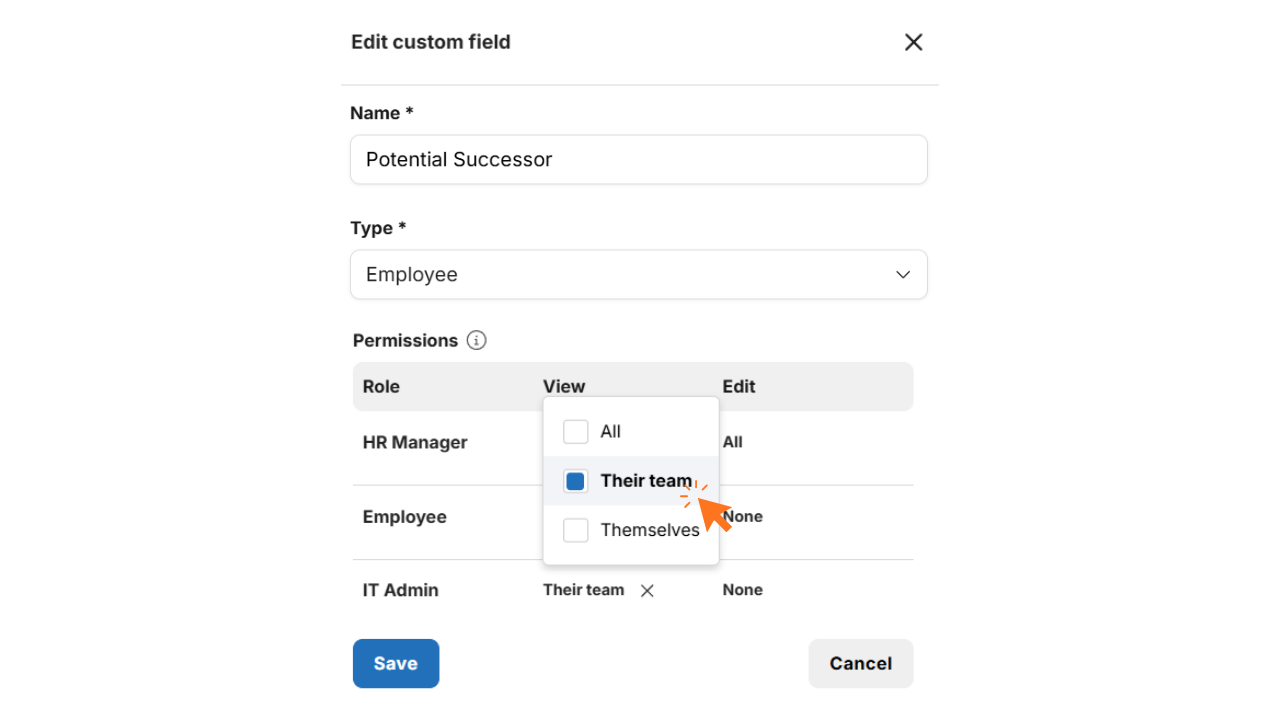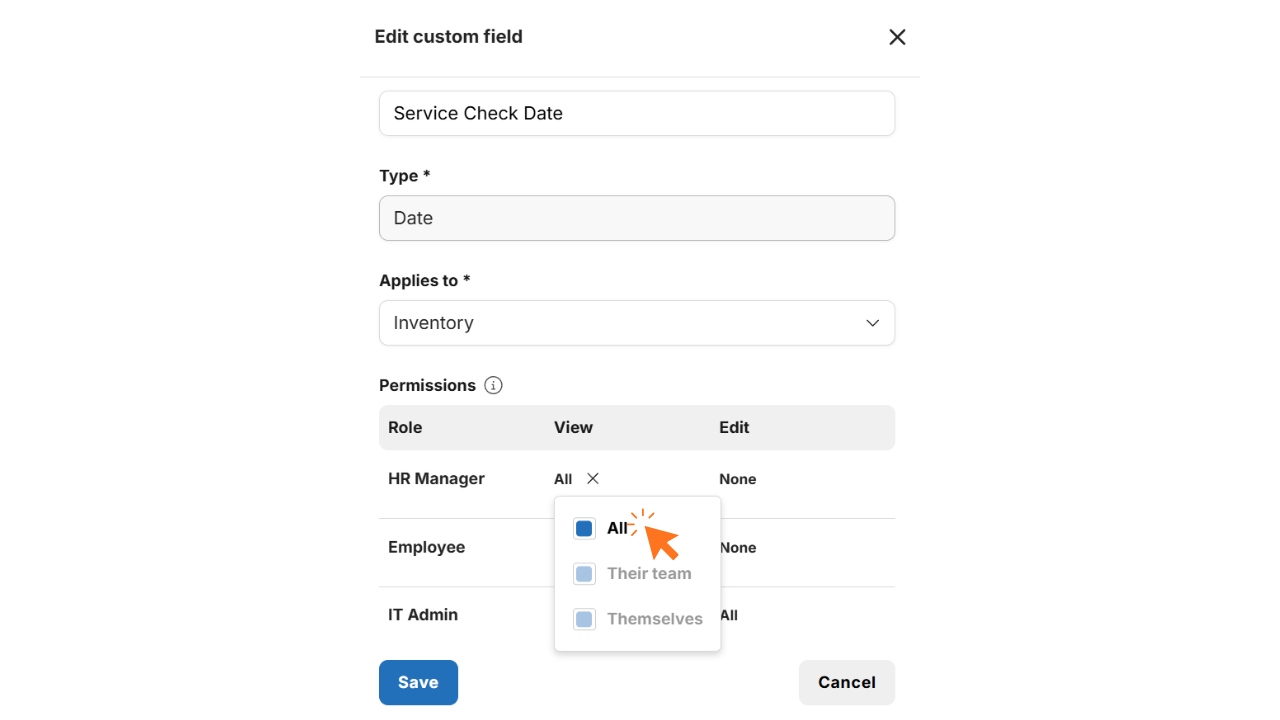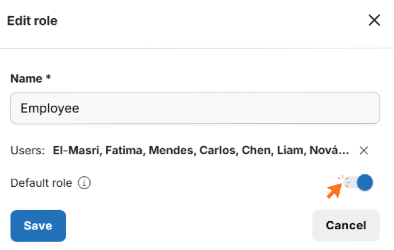Managing access within an HR platform may sound simple, but anyone who has scaled a team, hired new managers, or brought collaborators from other departments into the mix knows it rarely is. People need different levels of visibility, and responsibilities shift often. One-size-fits-all permissions can create inefficiencies, expose sensitive information, or slow work to a crawl.
TalentHR now removes that headache completely. With the introduction of custom roles and permissions, you can define exactly who sees what and who can edit what, without workarounds, or compromising your internal processes. Our latest release provides the flexibility to build fully customizable access rules that accurately reflect how your teams operate on a day-to-day basis.
Below is a quick walkthrough of how it works, detailing how custom HR roles and permissions can streamline your HR operations, make them faster, more secure, and easier to manage.
Why customizable access matters more than ever
As companies grow, the level of detail required to manage user access grows with them. HR teams often deal with similar challenges:
- Managers need visibility into their teams but not the entire company.
- Finance needs access to compensation fields, but not performance documents.
- IT needs to update asset details, but shouldn’t see personal data.
- HR admins need full access, but they don’t want to be the only ones managing their HRIS system.
When access is too open, sensitive information can land where it shouldn’t. When it’s too limited, people can’t do their jobs effectively. And when permissions can’t be customized, HR spends more time solving access problems than managing people. The new system in TalentHR simplifies this complexity, making it manageable and scalable.
Custom roles and permissions: What’s new on TalentHR
TalentHR’s latest update brings a complete rethinking of how permissions work across the HR software. Instead of pre-defined roles and fixed visibility rules, you now have full control.
Here’s everything you can do with the new roles permissions framework.
1. Create roles completely from scratch

You can now build roles for literally everyone:
- HR assistants
- Team leads
- IT asset managers
- Payroll specialists
- Onboarding coordinators
- Learning and development teams
- Operations or office managers
Each role can mirror the exact responsibilities of the job. If two people do similar work, assign them the same role. If different teams need custom variations, create as many as you need.
2. Set access levels for every feature in the platform

The new permissions system lets you define how each role interacts with every major feature in TalentHR; and the details of it. Instead of broad “view” or “edit,” you get fine-grained control.
For each module, you can decide:
- No access
- View access
- Edit access
- Manage access
For example:
- HR can manage personal data, compensation, and documents.
- Managers can view time off balances, but only for their direct reports.
- Finance can access salary fields for payroll, but nothing related to performance.
- IT can update laptops and equipment without touching personal data.
Every part of TalentHR now adapts to your structure, not the other way around.
3. Control visibility and editing rights for each profile tab, field, and document

Employee profiles contain a mix of information: personal details, job data, compensation, performance, documents, and more. Not all of this should be seen, or edited, by everyone.
With the new granular controls, you can decide:
- Which profile tabs are visible
- Which fields can be viewed or updated
- Who can edit or view specific document folders
For instance:
- Compensation fields can be restricted to HR and leadership.
- Emergency contacts and basic information can be view-only for HR and direct managers.
- Training records can be visible to selected team members.
4. Set viewing and editing rights for asset fields

If your business uses TalentHR to track equipment, access cards, devices, software, or other company assets, this update makes the process smoother.
You can now define:
- Who can view or edit specific asset fields
- Who can update asset details
- Who can manage assignments
This is particularly useful for IT, facilities, procurement, and operations teams. They get the access they need without exposing employee data they don’t need.
5. Assign a default role for new users

When new users join your TalentHR workspace, manually configuring access every time can be tedious and prone to mistakes, especially if you have configured multiple custom roles.
You can now assign a default role for all new users. This ensures:
- Consistent access from day one
- No accidental overexposure
- Less manual work for HR admins
If someone needs different access later, simply adjust their role or assign a different one. But the default saves you time and eliminates repetitive tasks.
Get started today
You can begin creating custom roles and adjusting your permission settings right away, no matter your plan or team size. Simply sign up for free or log in to TalentHR and explore the new options in your workspace.

 Build structure without adding steps.
Build structure without adding steps.

